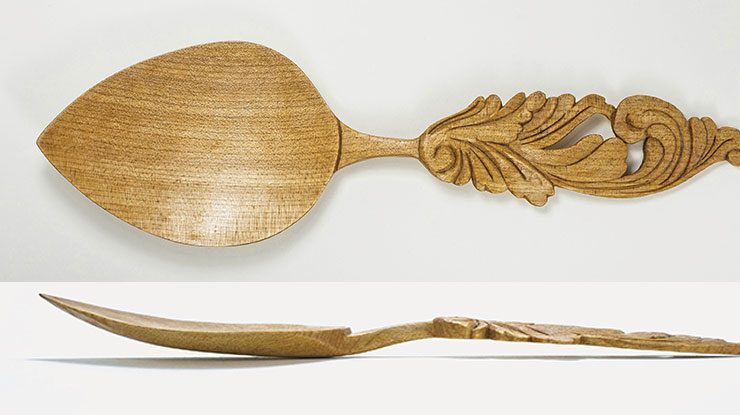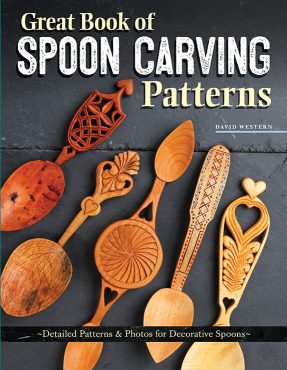Lovespoon carver shares the story behind a traditional token of affection
By Dave Western
Throughout Europe from the early 1600s to the turn of the 20th century, it became popular for young men to make and give gifts to the young women who had captured their hearts. The most popular of these was the lavishly decorated lovespoon. It became so synonymous with courtship that the word ‘spooning’ became a popular term. Learn all about lovespoons in the article below and carve your own lovespoon with one of my spoon carving patterns!
|
Unfortunately, spoons carved for a decorative purpose tend to be lumped together under the all-encompassing label of “lovespoons.” Their uses were often much broader. Some were used prior to actual courtship, merely to gauge mutual interest. These spoons were often modestly carved with minimal decoration. A more ornate spoon requiring significant skill and effort might be carved as a gift once a courtship was underway. A spoon of this nature would serve as something of a resumé, showing off the suitor’s skill, tenacity, and devotion. Falling between the frivolity of the tester type spoon and the seriousness of a courting spoon, the lovespoon was generally a passionately and finely carved offering, given where a positive response was likely but a betrothal wasn’t necessarily expected. They are often more eccentric in design and ornamentation than courting spoons. |
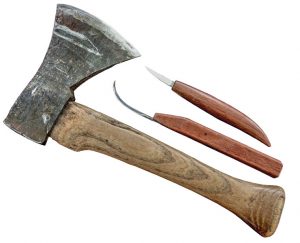
Since the earliest days of romantic spoon carving, the suitor’s toolkit has consisted of three basic tools. |
|
In the Breton region of France, young men of courting age would often proudly display and use a unique style of spoon known as a ‘festival spoon’ when attending village gatherings or celebrations. These ornately carved and inlaid spoons frequently folded for transport and would be opened ostentatiously to display the young man’s skill as a carver, or (if he had purchased it from a professional) his wealth and prospects. |
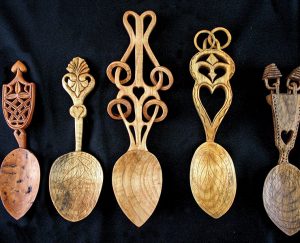
Courting spoons would show off a suitor’s abilities. |
|
Actual wedding spoons were specifically designed for use at the matrimonial celebration and were not part of the courtship preamble. Most often, they feature either two bowls joined by a single handle, or two separate spoons united by a length of wooden chain. The newlyweds would use the spoon to eat a first meal together, symbolically uniting two as one. Occasionally, double-bowled joke spoons would be made that featured bowls at unusable or impossible angles to eat from. To the great delight of the wedding guests, the couple would struggle, usually unsuccessfully, to master the spoons and prove to all they were united. |
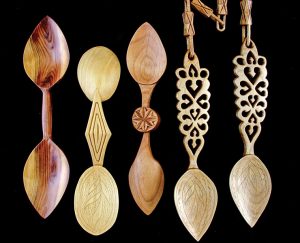
Wedding spoons symbolically united a couple by sharing |
|
Husbands, fathers, and grandfathers may have also carved decorated spoons for female members of their family. Common working tools such as crème spoons, ladles, and even eating spoons were likely gifted in this way and can be difficult to differentiate from spoons with a more romantic purpose. Generally, to tell historic romantic spoons from their utilitarian cousins, look for symbols such as hearts, inlays, initials, keys or keyholes, comma shapes, and elaborate patterning along the edges of the handle.
|
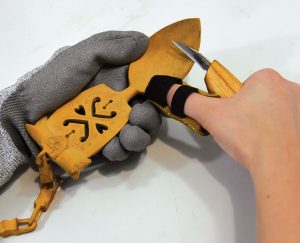
|
|
Even though the tradition of giving carved wooden gifts as love tokens has largely become extinct, the romantic spoon has endured—mainly because it’s a recognizable object that we still use today. Spoons are also small, portable, and straightforward to work, requiring only an axe, a straight knife, and a bent knife or gouge to create. Romantic carving may no longer be a ‘thing,’ but it’s as valid and relevant as ever, as making a gift for someone you love never goes out of fashion. |
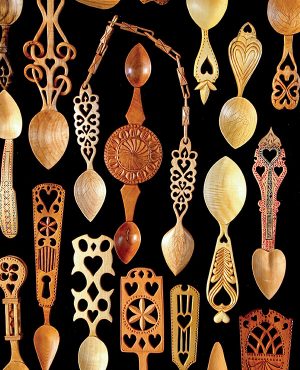 |
|
Dave Western is a professional lovespoon carver and the author of two books on carved lovespoons, both available from foxchapelpublishing.com. Dave carves on commission and also teaches classes. For more of his work, visit davidwesternlovespoons.com. |
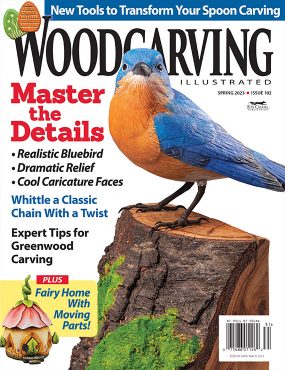 |
Get the Spring 2023 Issue Purchase the IssueFor more articles like this, subscribe to Woodcarving Illustrated magazine. Magazine SubscriptionPlus! Get digital mini magazines in your e-mail between printed issues.
|


